


The Culinary Comfort Of Nourishing The Soul
In a world that often moves at a hectic pace, the concept of cozy meals has gained tremendous popularity. These heartwarming dishes offer a sense of comfort, warmth, and nourishment for both the body and soul. Whether it's a chilly winter's night or a rainy day, cozy meals have the remarkable ability to soothe the spirit and provide solace in the simplest of ways.
At the heart of cozy meals is the idea of creating an atmosphere of warmth and contentment. These dishes often involve slow cooking and simmering, allowing their tantalizing aromas to waft through the air, filling the home with a sense of anticipation. The act of preparing a cozy meal is a form of mindfulness, a deliberate effort to create an experience that goes beyond mere sustenance.
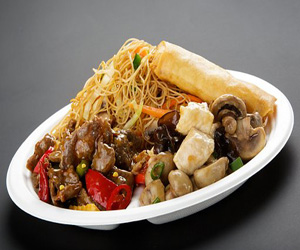 One of the defining features of cozy meals is their ability to evoke a sense of nostalgia. These are the recipes that transport us back to cherished moments in our lives. A pot of simmering chili on the stove might remind us of family gatherings around the fireplace, while a bubbling pot of chicken and dumplings might evoke the comforting embrace of a grandmother's kitchen. Cozy meals are not just about eating; they are about reliving memories and creating new ones.
One of the defining features of cozy meals is their ability to evoke a sense of nostalgia. These are the recipes that transport us back to cherished moments in our lives. A pot of simmering chili on the stove might remind us of family gatherings around the fireplace, while a bubbling pot of chicken and dumplings might evoke the comforting embrace of a grandmother's kitchen. Cozy meals are not just about eating; they are about reliving memories and creating new ones.
The hallmark of cozy meals is their simplicity. These dishes often feature familiar ingredients and straightforward preparation methods. From hearty stews and creamy macaroni and cheese to chicken pot pie and slow-cooked roasts, cozy meals embrace the idea that sometimes, the most satisfying culinary experiences are the uncomplicated ones.
Cozy meals also have a remarkable ability to foster connections. They are perfect for sharing with loved ones, whether it's a romantic dinner for two or a family feast. The act of gathering around the table to enjoy a hearty, comforting meal creates an intimate bond and a sense of togetherness. It's a time to put away distractions and engage in meaningful conversations while savoring the food that warms both the body and the heart.
The beauty of cozy meals is that they can vary greatly based on personal preferences and cultural influences. From a traditional pot of Irish stew to a spicy bowl of Indian curry or a Mexican chili, the world is filled with diverse and delectable options for cozy dining. The choice of cozy meal can be a reflection of one's cultural background, personal taste, or even the ingredients available in the pantry.
In today's fast-paced world, where the demands of daily life often leave us feeling overwhelmed, the allure of cozy meals lies in their simplicity and the profound comfort they offer. They are a reminder that amid the chaos, there is solace in a warm, nourishing meal that not only fills our bellies but also warms our souls. So, whether you're seeking solace on a rainy day or looking to create cherished memories, a cozy meal is always a welcoming embrace of comfort and contentment.
A Culinary Journey Of Sensory Delights
 The Appeal Of Flavorful Feasts
The Appeal Of Flavorful Feasts
Why are flavorful feasts so appealing? Here are some compelling reasons:
1. Celebration: Flavorful feasts are often associated with special occasions, holidays, and gatherings. They serve as a way to commemorate and celebrate the moments that matter most.
2. Variety: These feasts offer a diverse selection of dishes that cater to different palates. From savory to sweet, from mild to spicy, there's something for everyone to enjoy.
3. Connection: Preparing and sharing a flavorful feast can strengthen bonds and create a sense of connection. It's a communal experience that fosters togetherness.
4. Sensory Delights: The combination of flavors, aromas, and textures in a flavorful feast creates a sensory adventure. It's a delightful exploration of the culinary world.
5. Tradition: Many flavorful feasts are rooted in tradition, carrying the legacy of generations. They provide an opportunity to pass down family recipes and customs.
The Art Of Crafting Flavorful Feasts
Creating a flavorful feast is an art that requires thought, care, and attention to detail. Here are some tips for crafting a memorable and delicious feast:
1. Plan Ahead: Start planning your feast well in advance. Consider the number of guests, dietary restrictions, and the dishes you'd like to feature.
Nourishing The Spirit With Every Bite
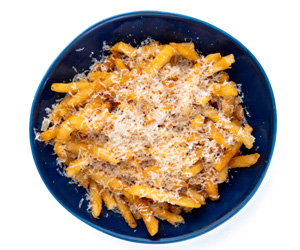 The beauty of soul-soothing dishes is that they transcend borders and cultures. While the specific recipes may differ, the concept of comforting food is universal. In the United States, it might be a plate of buttery mashed potatoes and gravy. In Japan, it could be a simmering bowl of miso soup. In India, a fragrant pot of dal and rice. The world is filled with these culinary hugs that have been perfected over generations.
The beauty of soul-soothing dishes is that they transcend borders and cultures. While the specific recipes may differ, the concept of comforting food is universal. In the United States, it might be a plate of buttery mashed potatoes and gravy. In Japan, it could be a simmering bowl of miso soup. In India, a fragrant pot of dal and rice. The world is filled with these culinary hugs that have been perfected over generations.
Soul-soothing dishes hold a special place in the hearts of many not only because of their delectable flavors but because they provide a sense of belonging and security. These are the meals that a loved one might prepare when you're feeling under the weather or after a challenging day. The aroma of a soul-soothing dish simmering on the stove is often enough to ease stress and bring comfort.
Elevating Your Culinary Experience
 Time Efficiency: One of the most significant benefits of simplified cooking is the time it saves. By using shortcuts, pre-prepped ingredients, and easy-to-follow recipes, you can have a tasty meal on the table in no time. This is particularly valuable for busy individuals and families with packed schedules.
Time Efficiency: One of the most significant benefits of simplified cooking is the time it saves. By using shortcuts, pre-prepped ingredients, and easy-to-follow recipes, you can have a tasty meal on the table in no time. This is particularly valuable for busy individuals and families with packed schedules.
Minimal Ingredients: Simplified cooking often relies on a shorter list of ingredients. You don't need a pantry full of exotic spices and specialty items. Instead, you can create flavorful dishes with basic staples, reducing both cost and clutter in your kitchen.
Easy Cleanup: With fewer pots, pans, and utensils involved, cleanup becomes a breeze. Many simplified recipes are designed for one-pot cooking, reducing the time spent on dishwashing and kitchen tidying.
Versatility: Simplified cooking doesn't mean boring or repetitive meals. With some creativity, you can adapt simple recipes to your tastes by adding or substituting ingredients. This flexibility encourages experimentation and the discovery of new favorite dishes.
Health Benefits: Many simplified cooking techniques emphasize fresh, whole ingredients. You'll have better control over what goes into your meals, making it easier to create nutritious options that fit your dietary preferences.


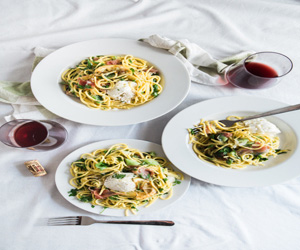
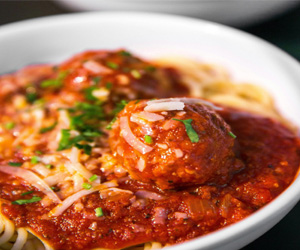
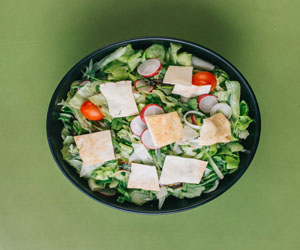
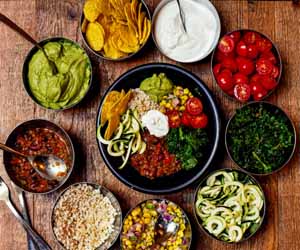
Crafting The Perfect Cup
 Coffee Brewing Techniques
Coffee Brewing Techniques
Drip Brewing: The classic drip coffee maker is a staple in many households. Ground coffee is placed in a filter, and hot water is dripped over it, allowing the liquid to flow through the grounds, extracting flavors along the way. It's a simple and consistent method.
Pour-Over: Pour-over brewing is a manual and more nuanced approach. Hot water is poured over a bed of coffee grounds in a circular motion, resulting in even extraction. The technique allows for a high level of control over variables like grind size, water temperature, and pouring rate.
French Press: The French press, also known as a press pot or plunger pot, uses a metal or mesh sieve to separate coffee grounds from the liquid. The grounds steep in hot water, and the plunger is used to press them to the bottom, resulting in a full-bodied cup.
Espresso Brewing: Espresso is a concentrated coffee beverage made by forcing hot water under pressure through finely-ground coffee. It requires precision in variables like grind size, water temperature, and pressure to produce a shot with a rich crema and complex flavors.
AeroPress: The AeroPress is a versatile, portable brewing device. Coffee grounds steep in hot water, and gentle pressure is applied to extract the liquid. This method is known for its quick brew time and clean taste.
Essential Tips For Success
 2. Start With Whole Foods
2. Start With Whole Foods
The foundation of a gluten-free lifestyle is natural, unprocessed foods. Fresh fruits and vegetables, lean proteins, and unprocessed grains like rice and quinoa are naturally gluten-free. These foods should form the basis of your diet, providing you with essential nutrients and fiber.
3. Experiment With Gluten-Free Alternatives
There's a wide variety of gluten-free alternatives available for the bread, pasta, and baked goods you love. Try different gluten-free flours, such as rice, almond, and coconut flour, in your recipes. Experiment with gluten-free pasta made from corn, rice, or quinoa. Over time, you'll discover which products and brands you prefer.
The Timeless Pleasure Of Comfort Food
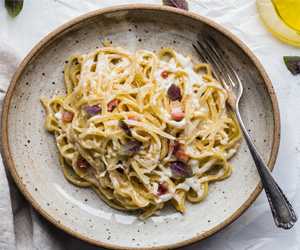
Family favorites are not just about taste; they are about tradition, heritage, and connection. The act of preparing and sharing these beloved recipes creates a sense of togetherness and unity. Cooking and enjoying these dishes with loved ones fosters a bond that transcends generations, ensuring that the flavors and traditions of the past remain alive and vibrant in the present.
In a fast-paced world, where daily life often seems to rush by, family favorites serve as a reminder of the importance of taking a moment to appreciate the simple pleasures in life. These dishes encourage us to slow down, gather around the table, and share a meal with loved ones. They offer an opportunity to create lasting memories and pass on the culinary traditions that have shaped our families.
Family favorites are not just about the recipes themselves; they are about the stories, the love, and the sense of belonging that accompany them. These dishes are the embodiment of the old saying, "Food is love made visible." They are a testament to the enduring power of comfort food, tradition, and the pleasure of sharing a meal with the people who matter most.
A Guide To Healthy And Inclusive Eating
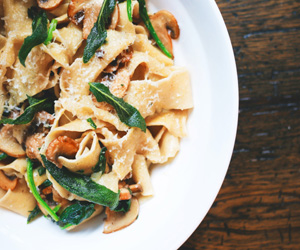 Religious And Cultural Practices: Many people adhere to specific dietary guidelines dictated by their religious beliefs or cultural traditions. For example, Muslims observe halal dietary laws, while Hindus may avoid beef due to religious beliefs.
Religious And Cultural Practices: Many people adhere to specific dietary guidelines dictated by their religious beliefs or cultural traditions. For example, Muslims observe halal dietary laws, while Hindus may avoid beef due to religious beliefs.
Health And Lifestyle Choices: Some people adopt dietary restrictions as a part of a healthy lifestyle. This includes vegetarianism, veganism, or gluten-free diets, often motivated by environmental concerns, animal welfare, or gluten-related health issues like celiac disease or gluten sensitivity.
Medical Conditions: Certain medical conditions, such as diabetes, require dietary restrictions to manage blood sugar levels effectively. Patients with kidney disease may need to limit their potassium and phosphorus intake.
Motivations Behind Dietary Restrictions
Health: Many dietary restrictions are motivated by health considerations. For example, a low-sodium diet can help manage high blood pressure, while a low-carb diet can be beneficial for individuals with diabetes.